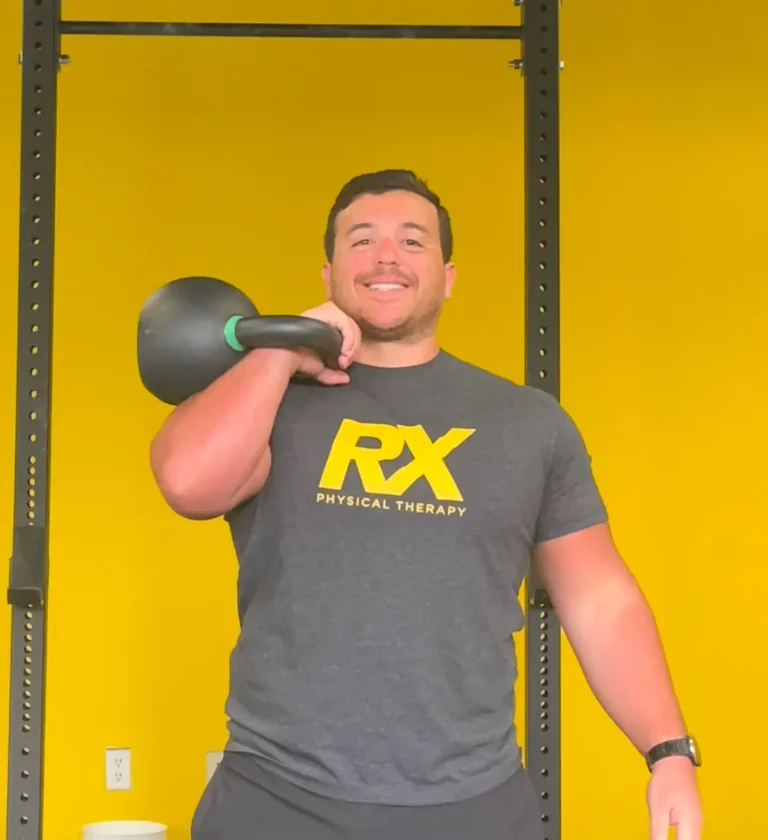Why out lifting bad advice starts with better movement education
Walk into any gym and you’ll hear them—those long-standing fitness beliefs passed down like gospel. “No pain, no gain.” “Stretch before every workout.” “Just rest it.”
The truth? These common physical therapy myths could be stalling your progress—or worse, increasing your risk of injury. At RX Physical Therapy, we help active adults cut through the noise and train with confidence.
Below are five of the biggest gym-related PT myths we hear all the time—and what you should believe instead.
1. “No Pain, No Gain”
✅ The Truth: Discomfort can be part of progress—pain is a red flag.
There’s a big difference between fatigue and pain. Muscle burn during a tough workout? Normal. Sharp, persistent pain? That’s a problem.
What to do instead:
- Use a 0–10 pain scale
- Stop activity if pain exceeds 5/10 or worsens during movement
- See a PT if pain lingers longer than a week
Ignoring pain can lead to serious overuse injuries, tendonitis, or joint issues that sideline your training for weeks or months.
2. “Static Stretching Is the Best Warm-Up”
✅ The Truth: Save static stretches for after your workout.
Holding stretches before lifting can reduce strength and power output. Instead, dynamic warm-ups prepare your nervous system and increase mobility safely.
What to do instead:
- Use dynamic moves like inchworms, high knees, and leg swings
- Add mobility drills specific to your workout
- Activate your glutes, core, and scapular muscles before loading
3. “Rest Is the Best Fix for an Injury”
✅ The Truth: Active recovery promotes healing better than complete rest.
While rest may feel safe, doing nothing often leads to deconditioning, joint stiffness, and slower recovery. Strategic movement improves circulation and tissue repair.
What to do instead:
- Modify, don’t eliminate, your training
- Focus on pain-free movement
- Follow a PT-guided program tailored to your healing timeline
4. “PT Is Only for Injuries”
✅ The Truth: PT is performance optimization, not just rehab.
Athletes and lifters don’t need to wait for injury to see a physical therapist. PT can help you move more efficiently, identify asymmetries, and hit your performance goals faster.
When to see a PT even if you’re not injured:
- Plateaus in strength or mobility
- Recurring tightness or technique breakdowns
- Movement assessments before increasing training volume or intensity
5. “If You’re Sore, You Did Something Right”
✅ The Truth: Soreness doesn’t equal progress.
DOMS is common after new exercises, but extreme soreness isn’t a marker of effective training. It can interfere with sleep, recovery, and future sessions.
What matters more than soreness:
- Strength or mobility gains
- Reduced fatigue and improved coordination
- Recovery that keeps you consistent
💡 Bottom Line:
You don’t have to stop training—you just need to train smarter.
At RX PT, we help athletes and active adults bust bad advice, move better, and stay in the game longer.
If something’s been nagging you—or you just want a second set of eyes on your lifts—book a discovery call today.


